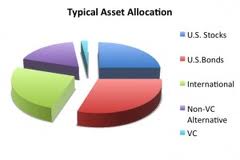 DRAWBACKS TO TODAY’S ASSET ALLOCATION MODELS: The asset allocation model remains the most widely accepted method for helping people understand how to invest their money. Yet it also comes with some important drawbacks. Some of the often-overlooked flaws in the typical asset allocation model that are promoted in the financial services industry include:
DRAWBACKS TO TODAY’S ASSET ALLOCATION MODELS: The asset allocation model remains the most widely accepted method for helping people understand how to invest their money. Yet it also comes with some important drawbacks. Some of the often-overlooked flaws in the typical asset allocation model that are promoted in the financial services industry include:
• Savvy investing requires an investor to put his or her money in the right place, in the right amount, and at the right time. Unfortunately, the typical asset allocation model doesn’t allow much for the element of timing. Perhaps this is because timing the stock market, whether it’s buying at the bottom or selling at the top, is an area of investing that many people assume cannot be done either effectively or consistently.
• The financial products industry loves the “nobody knows what the markets will do” mindset because it gives them the convenient excuse to sell the public almost any well-packaged investment product in the name of diversification. The high-commissioned sellers of precious metals, real estate limited partnerships, private-placement fixed income plans, and assorted investment schemes will often employ the asset allocation model on unsophisticated investors. That way, they can conveniently carve out a seemingly small 2% to 5% piece of an investor’s investment capital without raising much concern. They also do this with the unspoken understanding that individual investors have a greater tolerance for allocating money in percentages than they do with actual dollar amounts.
• Fixed income returns are historically low, and cash equivalents s yield close to nothing. In addition, fixed income, in the form of bonds or bond funds, are subject to price fluctuations which may result in capital loss. So for many investors today, fixed income and cash equivalents are essentially the same unattractive choice.
More important than any single investment decision will be your philosophy towards investing. Because of the drawbacks stated above, a savvy investor should look beyond the standard asset allocation model presented by the financial services industry for developing their long-term investment planning. Instead, choose a more refined approach to investing that makes sense and works more precisely to fulfill your ever-changing financial objectives.
**********
“Wide diversification is only required when investors do not understand what they are doing.”
Warren Buffett ~ CEO of Berkshire Hathaway
 PURCHASE YOUR INITIAL CHIPS: Buy in with a sensible portion of your liquid assets. It’s almost impossible to think objectively when you play a risky game with scared money.
PURCHASE YOUR INITIAL CHIPS: Buy in with a sensible portion of your liquid assets. It’s almost impossible to think objectively when you play a risky game with scared money.







